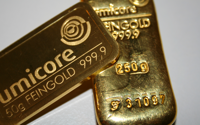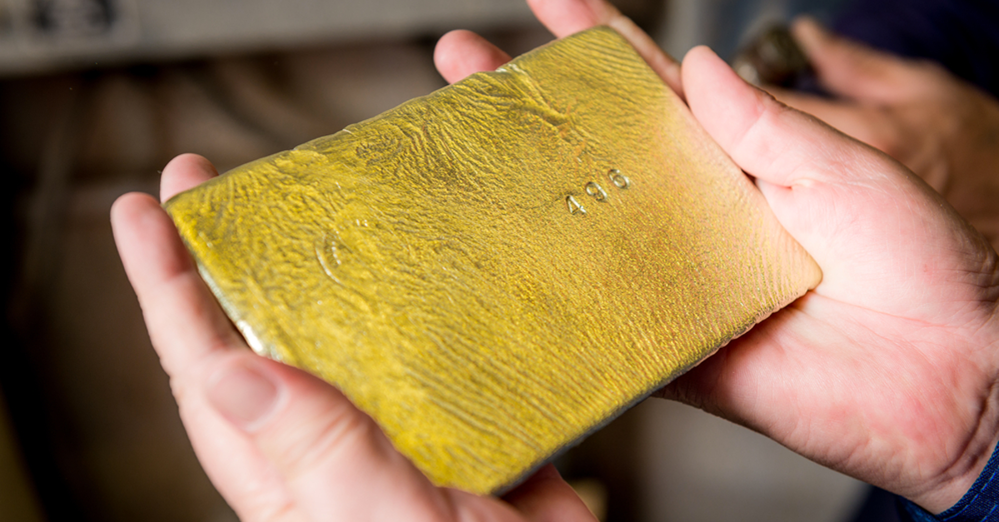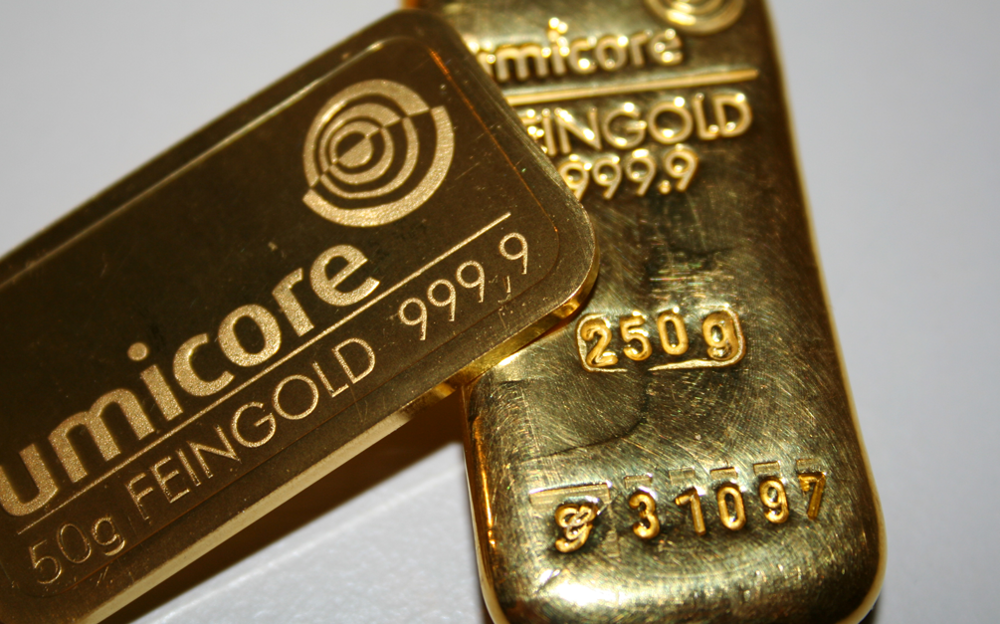Posted on May 27, 2021

Gold bars aren’t all the same. You may have noticed gold bars that are rough, rugged, and full of swirl marks and other abnormalities. These look quite different from the gleaming gold bars packaged in a protective assay package with a crisp, smooth polish and sharp corners. What gives? Are the “rugged” looking bars bad quality? The simple answer is no; they’re just different. Cast bars are manufactured differently than the more pristine-looking minted bars.
Cast and minted bars are the two major types of precious metals bars. Minted and cast bars are important to distinguish for gold dealers and buyers alike. There are significant differences between the two which affect both their price and resale value.
Casting is an ancient process that’s been in use for over 6,000 years and arguably the most influential industrial process in history. To manufacture a cast bar, a mold is first created to maintain a uniform weight, shape, and size for all bars being cast. A pure, refined form of the metal itself is heated to extreme temperatures until it is liquified. For gold, that’s 1,948°F Fahrenheit (1,064°C).
The liquid metal is then poured into the mold, where it solidifies. After cooling, the newly-formed bar can be removed from the mold. Manufacturers usually stamp the cast bar with the refinery’s name, weight, purity, and sometimes a logo within a few hours of removing it from the mold. Good Delivery-certified refiners must include a unique serial number as well, which is either stamped or engraved onto the bar.
Because of their production method, cast bars are sometimes referred to as “poured” or “molded” bars as well.

Cast Bar with visible striations. Note the gently undulating surface, a side-effect of the cooling process after the bar was cast.
Cast bars have a more natural, organic appearance that adds character and texture. They usually do not come in protective packaging and can be handled and admired by gold investors directly. They also are completely unique as the casting process creates blemishes and irregularities on individual bars, with no two ever being the same. You can run your fingers over the engraving and feel the rounded corners and unique textures the casting process produces. You can also see the undulations on the surface and, up close, you might see pinholes or striations. All these are side effects of the casting process that don’t affect the market value of a cast bar.
Cast bars are the easiest to produce, and therefore also the most cost-effective. Having low production costs means the price of a gold cast bar will be close to the spot price of gold. They’re often an “intermediate” form of gold, shipped to other manufacturers or mints to be re-melted and shaped into jewelry, coins, or minted bars.
Additionally, the size of cast bars is only limited by the size of the mold. Cast bars are regularly made in weights up to 400 troy ounces (12.4 kg, or 27.4 lbs).
Minted gold bars are created similarly to cast bars but more uniformly. They’re most often made using a continuous casting machine. A continuous casting machine melts refined gold to generate a long strip of pure metal, then cuts it with a die to create uniform blank bars with predetermined sizes and weights. This process is similar to the process of creating coin blanks for government or private mints to stamp and finish into coins.
Once these bars are properly shaped, they are run through a quality assurance test to ensure consistent size and weight. Once they pass the check, they’re often polished to produce a uniform, gleaming surface. After they’re washed, rinsed, and blown dry, they go to the design phase. The minted bars are heated just enough to soften them without melting, and then a design is stamped directly on the metal using a minting press.
Some brands, like Valcambi, keep their minted bars relatively simple: a logo and the information required for Good Delivery certification. Perth Mint includes a pattern of kangaroos on the back of their minted bars. PAMP Suisse famously creates rather elaborate minted bars, most often featuring the Roman goddess Fortuna. PAMP Suisse has also issued minted bars on religious and lunar new year themes.
After the designs are complete, the minted bars are inspected again, polished, and packaged.
Due to the extra steps and labor involved in the minting process, minted bars are more expensive to manufacture than cast bars. On the other hand, because they are created in a highly controlled and uniform process, minted bars can be easily identified and traded on the open market. (Especially those pre-packaged bars along with assay information attesting their weight and purity.)
To many investors, the uniformity, sharp edges, and smooth, polished surfaces of minted bars are a thing of beauty. The uniformity, easy identification, and visual appeal are some of the main reasons that minted bars are the most commonly used in trading among investors.
On the other hand, because of the limitations of the minting process (really, limitations in the size of the minting presses), minted gold bars aren’t usually made in sizes over 10 oz.
Unlike cast bars which can be touched and easily handled, most minted bars rely on special packaging to ensure authenticity and purity. These gold bars most often come with a certificate of authenticity and assay details included in the packaging to allow for simpler and easier trading or sale on the open market.
However, the downside is, some investors find it harder to enjoy their minted bars. Taking them out of their packaging eliminates the security aspect of the packaging. While all information about contents, purity, etc. are still on the bar itself, selling a minted gold bar outside its original manufacturer packaging might require an inspection or assay to confirm its authenticity.
|
Criteria |
Cast Bars |
Minted Bars |
|
Time to manufacture |
✓ |
|
|
Uniformity |
✓ |
|
|
Intricate designs |
✓ |
|
|
Size |
1 kg + |
Up to 10 oz |
|
Premium over spot price |
✓ |
|
|
Uniqueness |
✓ |
|
|
Smooth and polished |
✓ |
|
|
Require less packaging |
✓ |
|
|
Resale value |
✓ |
|
|
Ease of sale |
✓ |

A minted bar (left) and a casted bar (right). Note the differences in the uniqueness, finish, and uniformity of each.
When it comes to investing and trading precious metals, minted gold bars are an excellent option for investors, thanks to their uniformity and added security packaging. This also makes minted bars easier to resell closer to the spot price. Still, you will have to pay a premium for minted bars and forego the joy of handling the metal yourself.
Conversely, if you are looking for an investment in something more cost-effective and unique, cast bars are the way to go. Cast gold bars are priced much closer to the spot price of gold and are available in much greater weights. Therefore, you could get a good bang for your buck on a cast bar purchase.
Whatever you choose, BullionMax has you covered for your gold cast and gold minted bar needs.